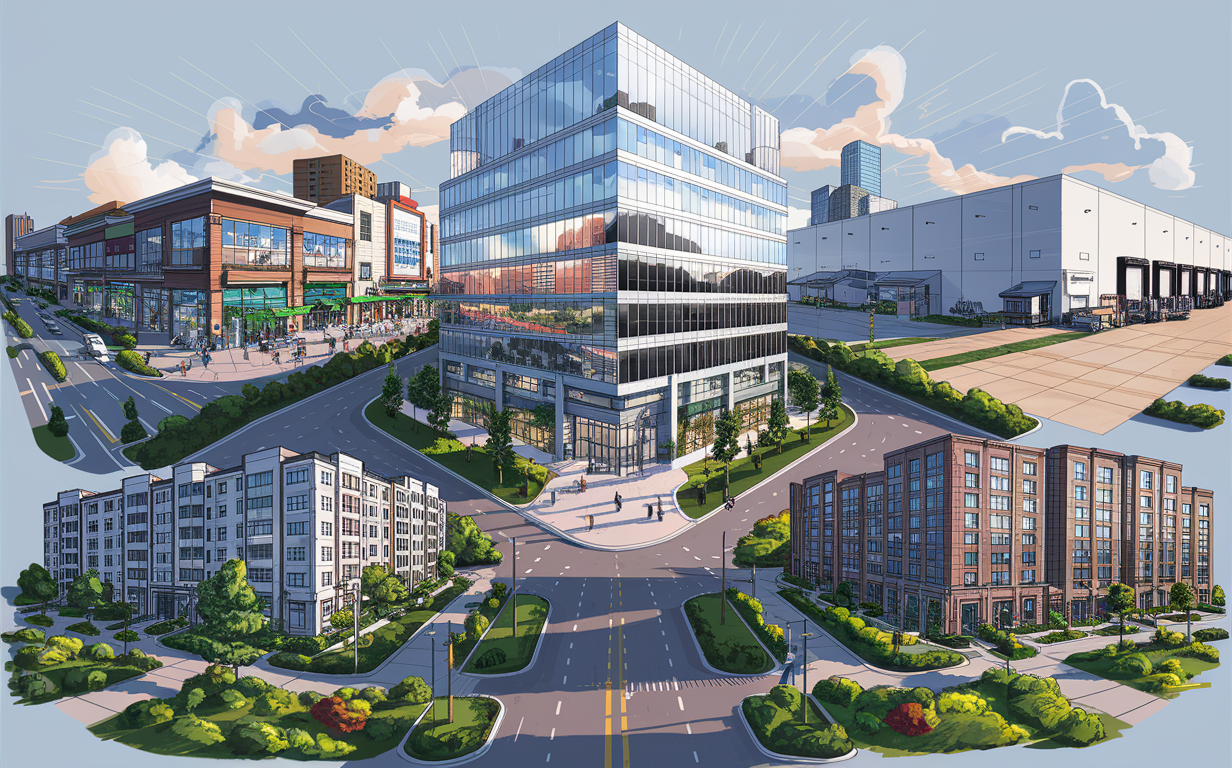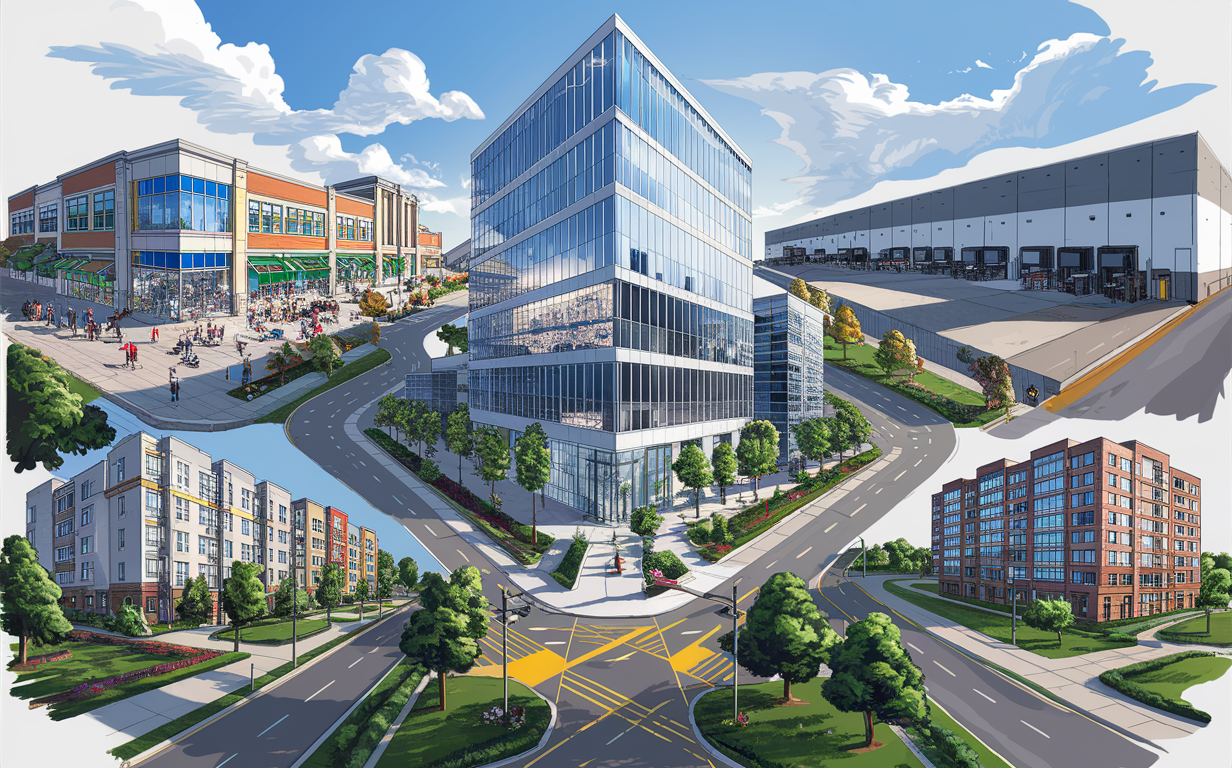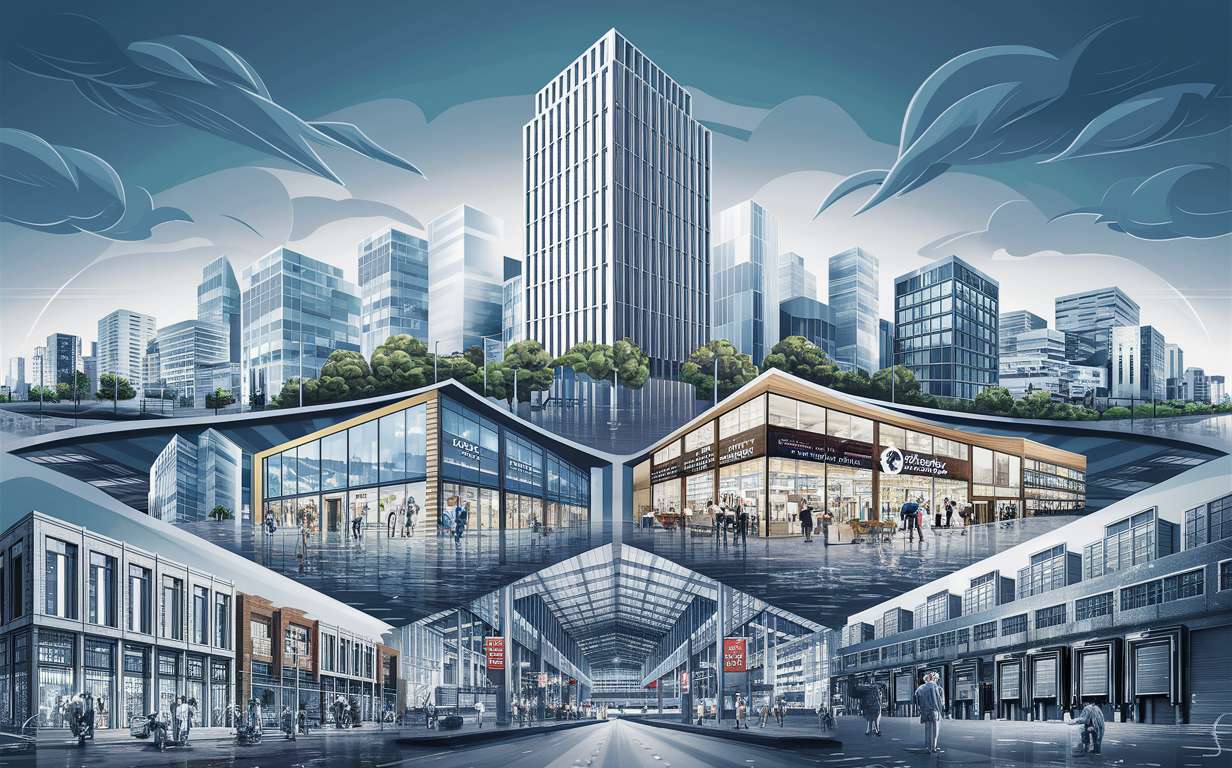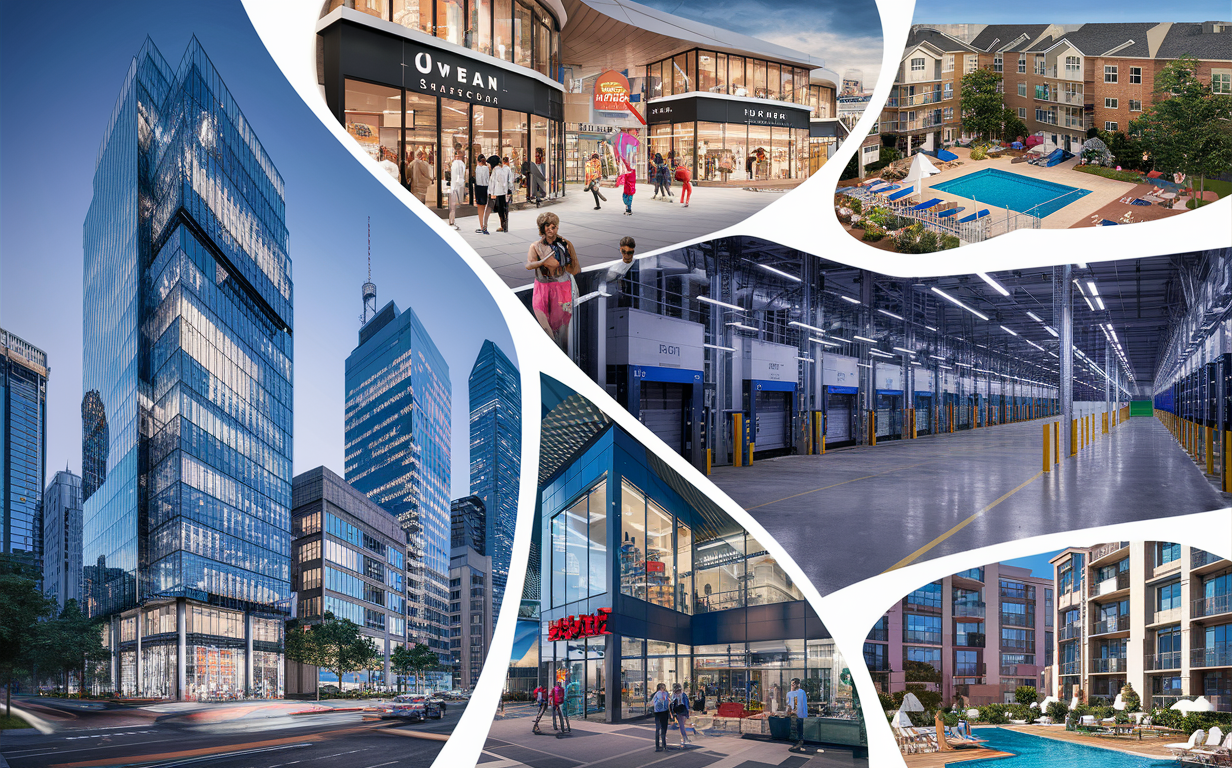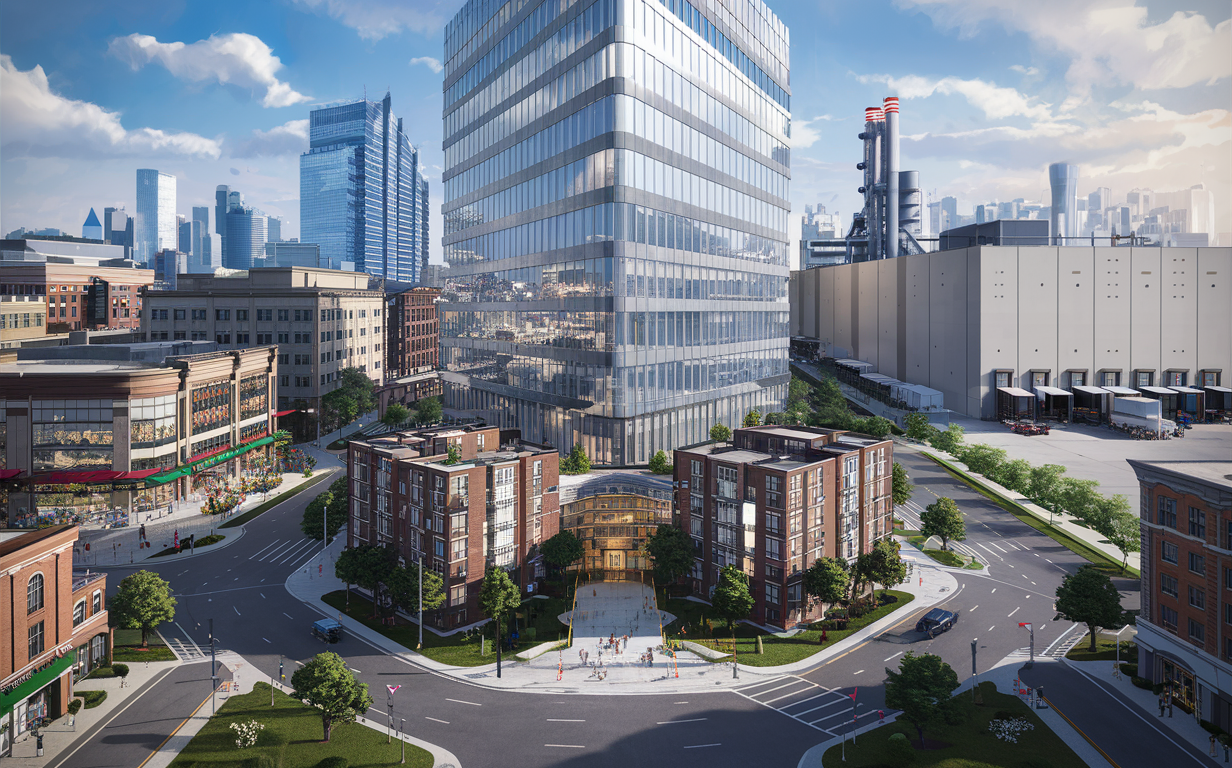
Discover the Top Types of Commercial Real Estate Properties
Discover the Top Types of Commercial Real Estate Properties
Commercial real estate properties come in various types, each catering to different business needs and investment strategies. Whether you are a seasoned investor or a newcomer, understanding these types can help you make informed decisions and maximize your returns.
Key Takeaways
Office buildings, retail properties, industrial spaces, multifamily residences, and special use buildings are the primary types of commercial real estate.
Each property type serves unique purposes and comes with specific investment considerations.
Commercial properties can significantly differ in terms of location, size, and tenant requirements.
Understanding market trends and property classifications can aid in making sound investment choices.
Office Buildings
Office buildings are designed primarily for businesses to operate. They range from single-tenant spaces to high-rise complexes housing multiple companies.
Types of Office Buildings
Class A: High-quality buildings in prime locations with state-of-the-art facilities.
Class B: Good quality buildings with fair rental prices, not as modern as Class A.
Class C: Older buildings needing renovation, usually offering the lowest rents.
Retail Properties
Retail properties include any real estate used for commerce, where goods and services are sold.
Types of Retail Properties
Shopping Malls: Large spaces with a variety of stores and anchor tenants.
Strip Malls: Smaller retail centers with a row of stores sharing a parking lot.
Stand-Alone Stores: Individual retail locations, often occupied by a single tenant.
Investment Considerations for Retail Properties
High foot traffic areas tend to generate better returns.
The impact of e-commerce on brick-and-mortar stores.
Flexibility to adapt to changing consumer preferences.
Industrial Spaces
Industrial spaces are essential for manufacturing, storage, and distribution.
Types of Industrial Spaces
Warehouses: Large spaces for storing goods.
Manufacturing Buildings: Facilities equipped for producing goods.
Flex Spaces: Combination of office and industrial use.
Benefits of Investing in Industrial Spaces
Long-term leases with stable income.
High demand in areas with strong logistics infrastructure.
Lower maintenance costs compared to other property types.
Multifamily Residences
Multifamily residences include properties designed to house multiple families, such as apartment complexes and duplexes.
Types of Multifamily Residences
Apartment Buildings: High-rise or low-rise buildings with multiple units.
Duplexes and Triplexes: Smaller buildings with two or three living units.
Condominiums: Individually owned units within a larger complex.
Advantages of Multifamily Investments
Steady cash flow from multiple tenants.
Diversified income streams reduce risk.
Opportunity for value-add through renovations and improved management.
Special Use Buildings
Special use buildings cater to specific needs and include properties like hotels, hospitals, and schools.
Types of Special Use Buildings
Hotels: Accommodations for travelers, ranging from budget to luxury.
Healthcare Facilities: Hospitals, clinics, and nursing homes.
Educational Institutions: Schools, colleges, and universities.
Considerations for Special Use Investments
Dependence on specific market demand.
Regulatory and zoning requirements.
Higher operational complexities and management needs.
Market Trends and Considerations
Understanding market trends and geographical factors can significantly impact your investment choices.
Geographical Considerations
Urban Areas: Higher demand for office and retail spaces.
Suburban Areas: Increasing demand for multifamily residences and industrial spaces.
Rural Areas: Specialized industrial spaces and agricultural properties.
Current Market Trends
E-commerce Growth: Increasing demand for warehouse and distribution centers.
Remote Work: Shifts in office space requirements and designs.
Sustainable Buildings: Growing popularity of eco-friendly and energy-efficient properties.
Unique Data on Commercial Real Estate
Here’s a table summarizing some unique data on commercial real estate properties in the Pacific Northwest:
Property Type Average Rent (per sq ft) Vacancy Rate Typical Lease Length Office Buildings $25 12% 3-5 years Retail Properties $20 10% 5-10 years Industrial Spaces $15 8% 5-10 years Multifamily Residences $1,500 per unit 5% 1 year Special Use Buildings Variable 6% Variable
Office Buildings: According to a report by CoStar Group, office properties accounted for the largest share of commercial real estate investments in the United States in 2020, with a total investment volume of $106.2 billion (Source). The Class A office sector has been particularly strong, with vacancy rates declining and rental rates increasing in many major markets.
Retail Properties: Retail properties, including malls, shopping centers, and strip malls, have seen significant changes in recent years due to the rise of e-commerce. According to a report by JLL, retail accounted for 11% of commercial real estate investments in the U.S. in 2020, with a total investment volume of $43.5 billion (Source). However, the sector has been challenged by store closures and declining foot traffic, particularly in malls and shopping centers.
Industrial Properties: Industrial properties, including warehouses, distribution centers, and manufacturing facilities, have been in high demand due to the growth of e-commerce and the need for efficient supply chain logistics. According to a report by CBRE, industrial accounted for 22% of commercial real estate investments in the U.S. in 2020, with a total investment volume of $84.1 billion (Source). The sector has seen strong rental growth and low vacancy rates, particularly in major logistics hubs.
Multifamily Properties: Multifamily properties, including apartments and other residential rental properties, have been a consistent performer in the commercial real estate market. According to a report by REAL Capital Analytics, multifamily accounted for 31% of commercial real estate investments in the U.S. in 2020, with a total investment volume of $126.5 billion (Source). The sector has seen strong rental growth and low vacancy rates, particularly in urban areas.
Common Challenges in Commercial Real Estate
Investing in commercial real estate can come with its unique set of challenges:
Market Volatility: Sudden economic changes can impact property values and rental demand.
Regulatory Requirements: Compliance with zoning laws and building codes.
Tenant Management: Finding and retaining reliable tenants.
Maintenance Costs: Keeping properties in good condition to attract high-paying tenants.
Strategies for Overcoming Challenges
Diversification
Investing in different types of commercial properties can reduce risk. For example, combining office spaces with industrial properties can balance income streams.
Due Diligence
Conduct thorough research before investing. Understand the local market, property condition, and financial projections.
Professional Management
Hiring experienced property managers can help streamline operations and maintain tenant satisfaction.
List of Essential Tools for Commercial Real Estate Investors
Property Management Software: Streamlines tenant management and maintenance tasks.
Market Analysis Tools: Provides insights into local market trends and property values.
Financial Calculators: Helps assess potential returns and investment feasibility.
Networking Platforms: Connects investors with industry professionals.
Conclusion
Understanding the various types of commercial real estate properties is crucial for making informed investment decisions. Whether you are interested in office buildings, retail spaces, industrial facilities, multifamily residences, or special use buildings, each type offers unique opportunities and challenges. Stay informed about market trends, conduct thorough research, and consider professional management to maximize your investment returns.
Call to Action
Ready to take your real estate investments to the next level? Contact PMC Money today for personalized financing solutions that align with your investment goals. Call us at (509) 926-1755 or visit our website to explore our diverse loan options.
By providing a detailed overview of commercial real estate property types and including unique data, this article aims to offer valuable insights for investors. If you have any specific questions or need further assistance, feel free to reach out to our expert team at PMC Money.
